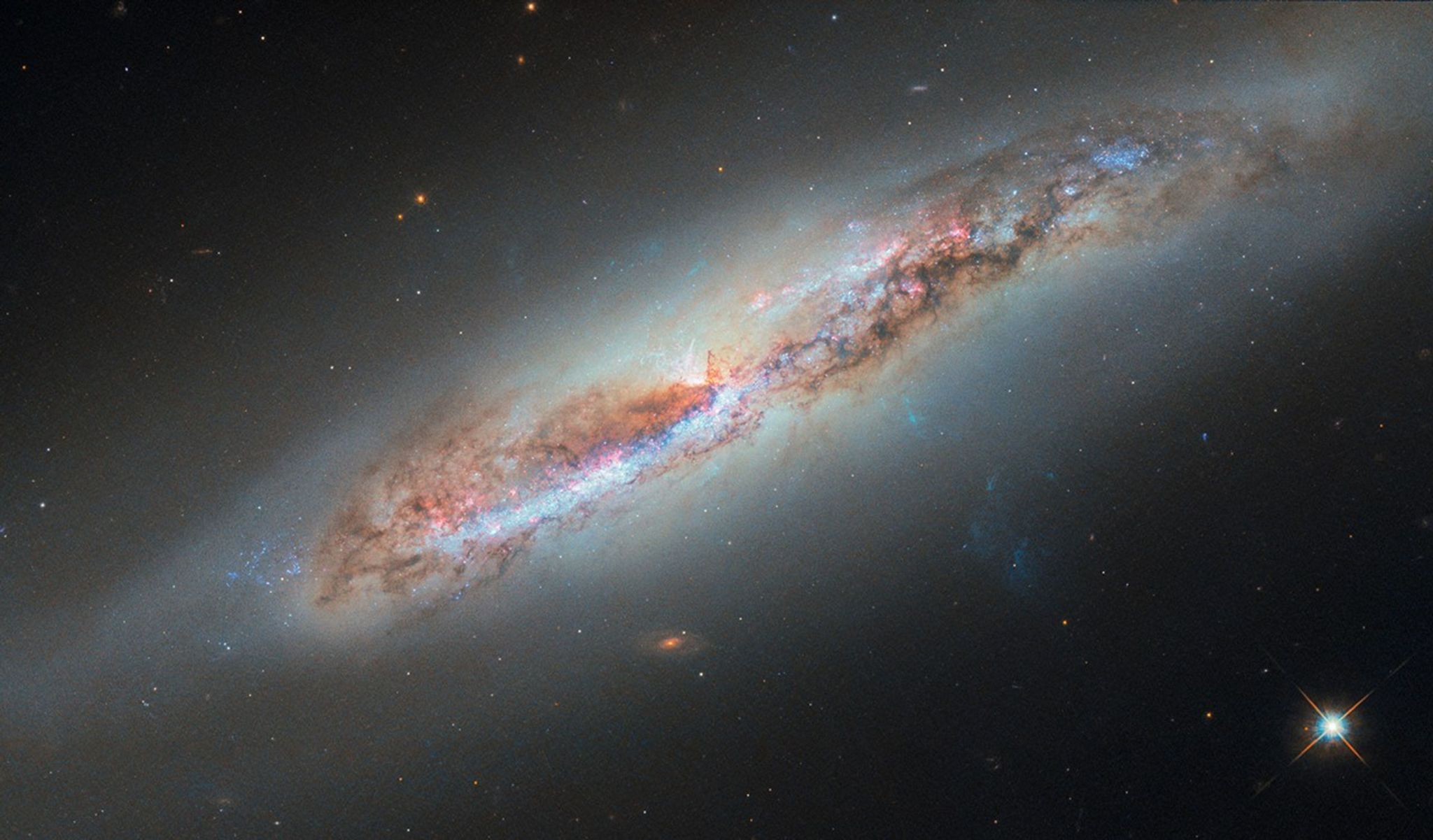Mysterious objects called brown dwarfs are sometimes called "failed stars."
from News and Features - NASA's Jet Propulsion Laboratory http://ift.tt/1fPPFmi
via IFTTT
Mysterious objects called brown dwarfs are sometimes called "failed stars."
New NASA video shows a rotating, two-lobed asteroid that recently flew past Earth.
Two decades into the study of planets that orbit other stars, scientists recall that the discovery of the first such planet seemed almost unbelievable at the time.
A new NASA study has concluded California accumulated a debt of about 20 inches of precipitation between 2012 and 2015.
Using NASA's Spitzer Space Telescope, astronomers have confirmed the discovery of the nearest rocky planet outside our solar system, larger than Earth and a potential gold mine of science data.
Unexplained arc-shaped, reddish streaks are visible on the surface of Saturn's icy moon Tethys in new, enhanced-color images from NASA's Cassini spacecraft.
NASA's Mars Reconnaissance Orbiter will fire thrusters on Wednesday for a maneuver to get into position for the 2016 arrival of NASA's next Mars lander.
Colorful new maps of Ceres, based on NASA's Dawn spacecraft data, showcase a diverse topography, with dramatic height differences between crater bottoms and mountain peaks.
The laser-firing instrument on NASA's Curiosity Mars rover has identified a rock target that is rich in silica, prompting further investigation with the rover.
Lake Tahoe's iconic blueness is more strongly related to the lake's algal concentration than to its clarity.
Kepler's newest planetary find joins a pantheon of planets with similarities to Earth.
NASA's Kepler mission has confirmed the first near-Earth-size planet in the "habitable zone" around a sun-like star.
Mars researchers are soliciting volunteers to locate odd polar-area features on Mars that have names such as "Swiss cheese terrain" and "spiders."
Researchers at JPL and UCLA have developed a technology that could reduce the power needed to send information from wearable devices.
Wind-harvesting robotic probes might someday explore the atmospheres of other planets, as well as our home planet, thanks to an innovative NASA JPL study.
Greenland's glaciers are badly undercut and melting faster than thought, raising sea levels faster than currently estimated.
NASA will host a news teleconference at 9 a.m. PDT (noon EDT) Thursday, July 23, to announce new discoveries made by its planet-hunting mission, the Kepler Space Telescope.
Curiosity is monitoring sunspots on the side of the sun facing away from Earth, during weeks when sun-monitoring spacecraft can't provide that information.
NASA's New Horizons will have the support of other spacecraft during its historic Pluto flyby, with observations from their outposts across the solar system.
A NASA study shows heat has been trapped in the Pacific and Indian oceans. The finding explains the recent slowdown in global temperature rise.
Magnetic waves from a black hole are set in motion as if a whip is being cracked.
A bouquet of colors highlights X-rays streaming off our sun.
NASA has selected seven technology proposals for continued study under Phase II of the agency's Innovative Advanced Concepts (NIAC) Program, including one from JPL.
With one year remaining in a five-year trek, NASA's Juno mission team is preparing for the spacecraft's expedition to the solar system's largest planet.
NASA's Dawn spacecraft is healthy and stable, after experiencing an anomaly in the system that controls its orientation.
NASA's Opportunity rover has resumed driving after Mars emerged from behind the sun. Plans call for the rover to examine sites in Marathon Valley during the upcoming winter.
The high-energy X-ray eyes of NASA's NuSTAR have peered into some of the most heavily buried supermassive black holes known.
A new image containing data from NASA's Spitzer and Chandra space telescopes shows a cluster of young stars expected to burn for billions of years.
When an oil spill sullied beaches near Santa Barbara, California, in May, a JPL airborne instrument tested new techniques that may help responders after future oil spills.
In most of the U.S., summer thunderstorms form on hot days. In the Great Plains, they often form at night. NASA is joining a multi-agency field campaign to learn why.
As Mars emerges from passing nearly behind the sun, NASA has resumed full operations of the Curiosity rover, which has reached a site where at least two rock types meet.
This NASA/ESA Hubble Space Telescope image features the galaxy NGC 4388, a member of the Virgo galaxy cluster. ESA/Hubble & NASA, ...
